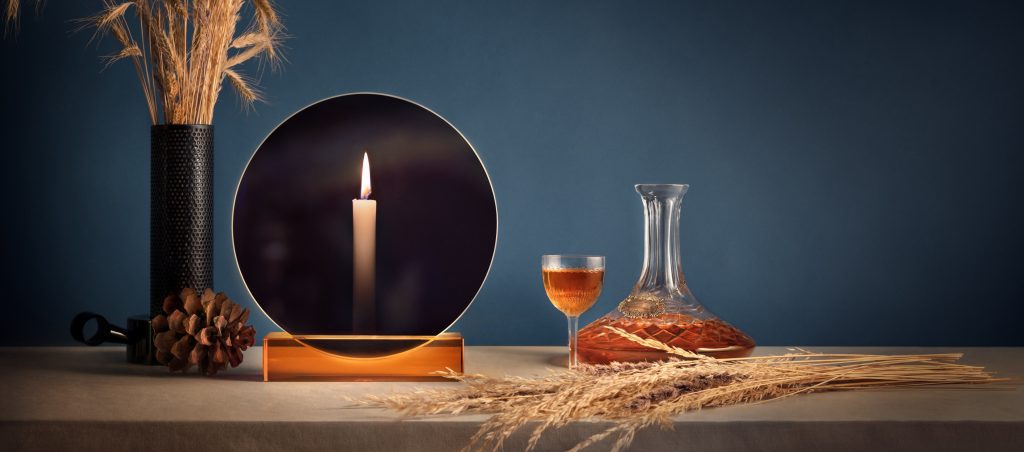

10 TALENTS: Exploring Light as a Medium
Light is indeed a mighty topic—one that illuminates the path of human progress and holds transformative power. Humanity’s discovery and mastery of fire was a pivotal leap forward, pulling us from the rhythms of dawn and dusk into a world no longer dictated by the sun’s schedule. Before electric light, civilization was bound to the natural day: arise with the sun and retreat at its setting. Throughout this historical journey, light evolved beyond limited and practical illumination, paving the way for artists to begin using light as a medium for creative expression.
While early light sources like candles and fireplaces carry a nostalgic charm, their glow was modest, and their dangers ever-present—as the history of great fires reminds us. Consider the Great Fire of London or the scores of theaters and opera houses that succumbed to flames. The invention of electric light freed us to work and play later into the night and allowed us the opportunity to explore light as a medium.
Today, artists and designers are expanding this freedom, using light not only as a source of practical illumination but as an expressive medium in its own right. With innovations like LED technology, light has evolved from a dutiful fixture into a dynamic artistic medium—one that can be shaped like marble or brushed across a space like paint.
It feels almost poetic: lighting, which once liberated us from the bounds of daylight, is now being liberated itself. In the hands of today’s creators, it steps beyond its role as a faithful helper to become an active partner in shaping the very spaces we call home. Read on to meet our 10 TALENTS from around the world who are doing incredible things with light as a medium, meeting the demands of both form and function.
Light that knows you’re there
Catrinel Sabaciag, Romania
In Cluj-Napoca, Romania, Catrinel Sabaciag is redefining light’s role in our world by treating it as a scientific medium for exploration rather than just a source of illumination. Her work stands at a unique intersection of product design, installation art, and interactive sculpture, drawing on an unexpected combination of quantum physics and Buddhism.
Some of her creations respond to human presence, embodying the idea that observation itself influences behavior—a physical expression of the quantum principle intertwined with the Buddhist concept of impermanence. Others transform from a simple monochrome to a spectrum of dynamic patterns, achieved with basic materials and white light. Each piece exemplifies her fascination with light as a medium to probe fundamental questions about perception and the transient nature of experience.






Sabaciag’s studio operates more like a laboratory, where she experiments with materials from optical filters to plexiglass, combining laser cutting technology with traditional casting methods. “When designing my pendant luminaires, I researched light intensities and CRI standards required for spaces like dining areas,” she explains. Her research extends beyond materials to the science of light itself. The Aurora and Noosphere luminaires showcase this technical foundation, offering users control over dimming and color to shape their environment’s atmosphere.
Each design aims to create moments of calm reflection in our hurried world, while still meeting practical lighting needs. It’s this combination – thoughtful concept, careful execution, and practical function – that makes her work particularly relevant to how we think about lighting today.








I am fascinated by how easily our senses can be deceived and, on the other hand how much we trust them. This is why I enjoy creating pieces that highlight the gap between perception and reality.
– Catrinel Sabaciag
Ancient stars, modern light
ELOA – Unique Lights, Germany
Housed in a historic electric factory in Berlin’s “Electric City,” once the domain of engineering giant AEG, the ELOA studio houses a new electrical revolution. Here, founder Simone Lüling collaborates with master glassblowers from Bohemia to create lighting that reconnects us with the cosmos.






Each piece begins with the ancient art of glassblowing – no molds, just skilled hands shaping molten glass into organic forms. “The light brings the shapes and colors to life,” Lüling explains. “Glass, like a diamond, transports and reflects light, creating a unique atmosphere.” The results mirror astronomical phenomena: SIRIUS glows like its namesake star, while PLEIADE forms part of a larger constellation of lights. Just as electric light once freed us from darkness, ELOA takes this liberation a step further, shaping each piece as a conduit of starlight, inviting us to experience the vastness of the universe within our own spaces.
ELOA’s creations find homes everywhere from gallery pedestals to hotel lobbies, historic mansions to sleek modern interiors. Drawing inspiration from celestial bodies, these pieces carry something universal in their DNA. Lüling’s design philosophy connects deeply to natural principles – each piece emerges through a process she likens to painting, where color and form develop with organic freedom. In ELOA’s hands, light connects us to something ancient – the same celestial wonder that drew our ancestors’ eyes skyward, now captured and shaped into forms for modern living.










I am deeply inspired by the process of working like a painter, embracing a workflow of free creation. The organic forms of the ELOA object embody this natural freedom entirely. Another key element for me is the connection to colour and its combinations. I feel very lucky to create a language through form and colour.
– Simone Lüling for ELOA
Less noise, more light
Streicher Goods, United States
Bringing a graphic designer’s eye to ceramic lighting from his Brooklyn studio, Ethan Streicher liberates light from conventional lamp formats through bold geometry and clean lines. “I want the viewer to focus on either the form or the texture/finish,” he explains. “If the form is complex, the finish shouldn’t distract, and vice versa.”






Streicher’s background in graphic design shapes his approach to both materials and space. Working primarily with stoneware clay, he occasionally turns to porcelain for its unique properties – the way it creates what he describes as “an amazing soft, warm glow.” His pieces play with negative space, using cutouts to cast patterns of light on walls and surfaces. Each design moves from rough sketch to Adobe Illustrator, where he fine-tunes dimensions and hardware specifications with digital precision.
Form leads Streicher’s creative process. “Sometimes the form is great, but I cannot figure out the best way for it to function,” he admits. Yet this challenge often leads to innovative solutions. His goal isn’t to create statement pieces that demand attention, but rather lights that become part of daily life – helping people ease into their evenings with the right ambiance. As he puts it, “Everything in a room can’t call for your attention.”








I envision my lamps becoming part of someone’s everyday routine—I love the idea that my art can be the thing that helps ease someone into the end of their day, creating a cozy atmosphere.
– Ethan Streicher, Streicher Goods
Yesterday’s plastic, tomorrow’s light
Stijn Van Aardenne, The Netherlands
The future of lighting might be found in a pile of recycled plastic. At least, that’s what Stijn van Aardenne’s work suggests from his studio in Rotterdam’s M4H district, where 3D printers transform discarded materials into forms that echo the organic curves of 1960s design while pushing the boundaries of what modern lighting can be.






“Light is absolutely a medium in my work,” van Aardenne explains, describing how the printing process itself shapes his designs. Each layer of recycled plastic catches and plays with light differently, creating unexpected textures and patterns that become integral to the final piece. These technical discoveries guide his creative process – from intimate table lamps to dramatic five-meter installations that command their spaces.
Working with both vintage aesthetics and digital fabrication, van Aardenne’s pieces remind us that innovation in lighting doesn’t always mean inventing something entirely new. Sometimes it means finding fresh ways to bring familiar forms to life, one printed layer at a time. His research-based approach involves constant experimentation, pushing the capabilities of both his materials and his machines until something unique emerges – pieces that honor the past while illuminating a more sustainable future for lighting design.








I aim to explore ideas that aren’t always straightforward, pushing boundaries to find new and interesting forms. My aesthetic vision is shaped by blending vintage inspiration with modern experimentation, always with a focus on innovation and craftsmanship.
– Stijn van Aardenne
Light finds a way
Tiini, Ukraine
In Kyiv, light takes on profound meaning at Tiini, whose very name plays with the Ukrainian word for shadow (tini). Founded in 2023, the studio transforms traditional craftsmanship into modern expressions of hope and resilience.
“Light is more than just a tool for visibility,” explains founder Dovgal Tetiana. “It is a fundamental aspect of the emotional experience that my works create.” Consequently, this philosophy manifests in collections like Aura, where porcelain’s natural translucency becomes a medium for exploring the delicate balance between illumination and shadow.






Tetiana’s work investigates how light plays across different textures and materials. She sculpts, layers, and textures blown glass in her DEW collection, while experimenting with raw and recycled materials in other pieces. Her designs range from subtle additions that blend with their surroundings to bold statements that transform entire spaces. In her hands, light becomes a medium for reshaping our experience of space itself.
“In these dark times, as the country faces challenges, we believe that light holds a special power,” Tetiana reflects. “Our creations are not just design objects but symbols of hope and beauty, capable of bringing light even in the most difficult moments.” Indeed, her work reminds us that throughout history, the ability to control and shape light has represented human resilience and ingenuity in the face of darkness.








I investigate how light interacts with different surfaces, textures, and forms. These dynamic relationships enable me to shape atmosphere and mood, creating spaces that feel alive. The way light reveals and conceals, the balance between shadow and illumination—these are the elements I aspire to master in every piece.
– Tetiana Dovgal, Tiini
Lights that remember
Leo Maher, United Kingdom and Greece
Working between the UK and Athens, Leo Maher channels light to reveal histories that have slipped between the cracks. His pieces focus particularly on queer narratives, using design as a tool to rescue stories from obscurity.
“Every object, form and shape relates to something we have experienced before,” Maher explains. “I think it’s part of the job of the designer to recognize how what we create responds to this.” While geometric shapes may evoke references to Bauhaus and color grids nod to De Stijl, Maher’s work speaks in a different symbolic language; each material element carries a fragment of story. Like old legends passed through time, each component acts as what Maher calls “a figurative seed in the wind,” scattering its share of the tale across space.






His studio practice orchestrates an interplay of metals, plastics, ceramics, minerals, and woods. His process begins with function but quickly delves deeper, building each piece like a three-dimensional archive. Materials layer upon materials, meanings upon meanings. Consequently, the resulting works speak in multiple registers – practical lighting source, historical document, cultural commentary. Through careful combinations of raw elements, Maher creates what he terms “clusters of representative forms,” each one illuminating aspects of history that conventional records have left in shadow. Ultimately, his work underscores the notion that the advancement of light not only shapes our environments but also serves as a chronicle of civilization’s evolution.








In most of my pieces, each material element represents a particular narrative element. I like this idea that the beholders share allows for facets of narrative to be remembered and shared, much similar to the practising of legend
– Leo Maher
Engineering the eternal
D’armes, Canada
Alexandre Joncas and Gildas Le Bars, cofounders of D’Armes Studio, approach light with an intent to make it feel tangible, even alive, in any space. Joncas describes each light as “a presence in itself”—an entity that illuminates and fully inhabits a space, reshaping its atmosphere and influencing those within. Guided by what Joncas calls “an emotional response to form” and the interaction between materials, each piece is thoughtfully constructed to evoke a sense of warmth and subtlety.






The studio’s RA collection, named after the Egyptian sun deity, Ra, and the Cé collection, inspired by the Greek mythological figure Cecrops, each carry symbolic weight. These designs use anthropomorphic proportions that bring an enigmatic quality, with each piece becoming a tribute to light itself. As Joncas explains, “These are lights that are celebrated, almost revered in a figurative sense,” speaking to light’s elemental allure.
Located in Quebec’s Laurentian mountains, D’Armes’ studio is both a design workshop and a place for creative exchange. Interns and collaborators from around the world join them here, adding new perspectives to a process that values experimentation and evolving ideas. This mountain workshop becomes a gathering place for exploration, where nature and craft combine to shape designs that carry light’s timeless influence into the present.








I view each light fixture as a presence in itself. It doesn’t simply illuminate a space—it inhabits it, influencing the atmosphere of those within. I want my lights to be soft, warm, and inviting.
– Alexandre Joncas, for D’armes
Immersive Illuminations
Studio Lampent, Greece
Working between Sweden and Greece, Stavros Kotsakis blends Scandinavian minimalism with the luminous qualities of the Mediterranean. Since founding Studio Lampent in 2011, he’s redefined conventional lighting into intricate optical illusions—fixtures that cast shifting, almost otherworldly images across walls and ceilings.
Kotsakis’ creative path began with industrial materials, transforming recycled parts into light fixtures. This hands-on work evolved into a focused study of light itself—how materials can capture, refract, and diffuse it. His practice investigates each material’s unique response to light, experimenting with its physical properties to sculpt illumination in nuanced ways, turning each fixture into a deliberate interplay of form and luminosity.








Guided by the principles of kinetic and concrete art, Kotsakis approaches each design as a deliberate puzzle, matching materials with specific qualities of light to achieve refined effects. His works navigate both installation and function, embracing structural clarity that lets light shape its own transformations. These three-dimensional luminous forms transition between practical lighting and sculptural presence, balancing utility with artful expression.
Channeling the early spirit of motion art while embracing contemporary minimalism, Studio Lampent pushes the frontiers of light, making each fixture a dynamic component of spatial experience, forever testing light’s ability to transform a room into an evolving canvas.










“Light has a dynamic quality which allows endless possibilities for experimentation. Once I got into this experimentation, I have constantly felt challenged to transform my research findings into complete light objects“
– Stavros, Studio Lampent
Light mastered over generations
Nassi Lamps, Italy
The revelation came to Francesca De Giorgi on an ordinary visit to her family’s lampshade workshop in Lecce. What might have seemed dated or old-fashioned suddenly appeared as something else entirely – an archive of possibility, where traditional techniques could speak to contemporary spaces.
Now an architect turned lighting designer, De Giorgi creates what she calls “small architectures that contain the light.” Her designs center on fabric, the main element of her work, shaped by an inherited collection of forms and techniques from her family’s generational craft. She gravitates toward pure materials—natural stone and solid wood—studying how they interact with the lightness of textiles.








“I feel a great responsibility regarding the use of raw materials and production techniques,” she explains. Her work seeks out the oldest methods of production, those most closely tied to her territory. Each piece is made at what she calls a “slow tempo,” following pre-industrial approaches that retain a distinctly human imprint.
She imagines each lamp in its future environment – in summer or winter, at sunset or night, as part of the life that will unfold around it. These atmospheric visions guide her choice of details: the color, the type of fabric, a specific stripe or texture. The finished pieces then take their own unexpected paths, absorbed into lives and spaces she never imagined – possibilities that continue to enrich her understanding of her family’s longstanding legacy.








My approach to the world of light began when, entering the family lampshade’s workshop, one day like so many others, to visit my grandmother and my mother, I realized the potential hidden in this ancient practice and in these objects that are so dated and ‘old-fashioned’ that they still fascinate. since then, I have been working on the edge between traditional and contemporary, decoration and abstraction, feeling that light always brings you in a specific atmosphere.
– Francesca De Giorgi
Center stage lighting
Isabel Moncada, Mexico
For more than three decades, Isabel Moncada has worked from her Mexico City workshop, transforming raw materials into what she playfully calls “divas with their unique temperaments.” Her pieces reject simple utility – they’re performers, meant to command attention and stir emotion.
“When I design, I draw inspiration from the organic, asymmetry, and amorphous volumes,” she explains, “navigating between complexity and subtlety.” Her MOL series exemplifies this approach, with forms that echo molecular structures and insect anatomies. Each connecting piece is hand-modeled in silicon bronze, its warm, rosy-gold tone complementing hand-blown glass spheres, horsehair tassels, and porcelain diffusers.










The process combines ancient techniques with modern engineering. Lost-wax casting meets 3D modeling, traditional glass blowing interfaces with precise mathematical calculations. Her dedication to craft extends beyond aesthetics – each piece is built for longevity, with replaceable components and rigorous testing. “Sustainability is central to my design process,” she notes, approaching durability as both an environmental and artistic imperative.
Her workshop operates like a laboratory where discipline and rebellion coalesce. Moncada’s work thrives on visual contradictions—mixing three colors instead of using pure tones, embracing irregular forms over symmetry, and drawing vitality from “the incomprehensible, the diffuse, and the illogical.” The results evoke images of spiders, bones, cells, or viruses, inviting viewers to interpret them while reminding us that light fixtures can evolve from functional objects into provocative, living art.










The human need for tranquility can be met through soft, indirect lighting in rooms and gathering spaces. In these fast-paced times, we should look toward reclaiming mental and spiritual peace by designing pieces that create an inviting, reflective atmosphere.
– Isabel Moncada
Final Thoughts
From Romania to Mexico, these ten designers show us how light continues to evolve as an artistic medium. Some draw inspiration from the cosmos, others from molecular structures. They work with everything from recycled plastic to hand-blown glass, from ancient textile techniques to 3D printing, yet all share a commitment to pushing light beyond pure function. Each approaches light as deliberately as a painter might choose oils or a sculptor might select marble – a medium to be shaped, filtered, and transformed.
Their work reminds us that the story of light is really the story of human creativity. Just as the invention of electric light freed us from nature’s schedule, today’s designers free light from conventional constraints. In their studios, workshops, and laboratories, light preserves queer histories, filters Mediterranean sun through generations-old textile techniques, and transforms recycled materials into cosmic messages. These artists prove that light’s potential remains as boundless as our imagination.
Discover our selection of Light as a Medium
-

 Maze Lamp
Maze Lamp -

 Vitra Pendant Lamp
Vitra Pendant Lamp -

 Pata de Elefante Lamp
Pata de Elefante Lamp -

 Modern Floor Lamp Rosa Morada Natural Wood Ivory Fiberglass Shade
Modern Floor Lamp Rosa Morada Natural Wood Ivory Fiberglass Shade -

 Dew – Blown Glass Table Lamp
Dew – Blown Glass Table Lamp -

 Pyramid Hanging Lamp
Pyramid Hanging Lamp -

 Sonora Rattan – New Edition
Sonora Rattan – New Edition -

 Sonora Small – Linen Shade
Sonora Small – Linen Shade -

 Ceramic Crackle Mushroom Lamp
Ceramic Crackle Mushroom Lamp -

 Maze Lamp Floorstander
Maze Lamp Floorstander -

 Organic Modern Floor Lamp Turned Natural Parota Wood Ivory Fiberglass Shade
Organic Modern Floor Lamp Turned Natural Parota Wood Ivory Fiberglass Shade -

 Sculptural Table Lamp Mezquite Burned Wood Flexible Natural Linen Shade
Sculptural Table Lamp Mezquite Burned Wood Flexible Natural Linen Shade -

 Revivalamp – Repurposed Table Lamp
Revivalamp – Repurposed Table Lamp -

 Dupla Pendant Light Fixture
Dupla Pendant Light Fixture -

 Boomerang Floor Lamp
Boomerang Floor Lamp -

 Sculptural Floor Lamp Mezquite Burned Wood Flexible Natural Linen Shade
Sculptural Floor Lamp Mezquite Burned Wood Flexible Natural Linen Shade -

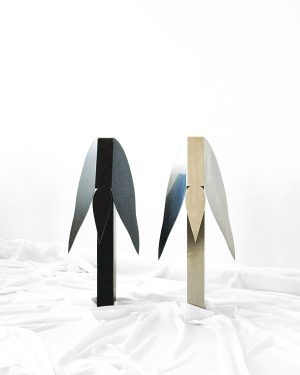 Cormoran – Steel Lamp
Cormoran – Steel Lamp -

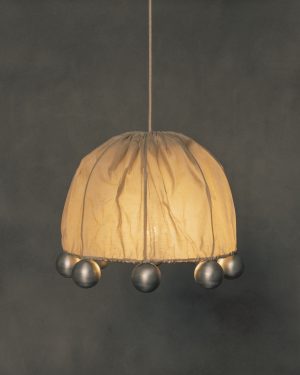 Alter Pendant – Aluminium Linen Beeswax
Alter Pendant – Aluminium Linen Beeswax -

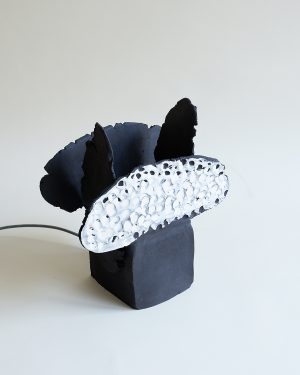 Slow Mistral – Table Lamp
Slow Mistral – Table Lamp -

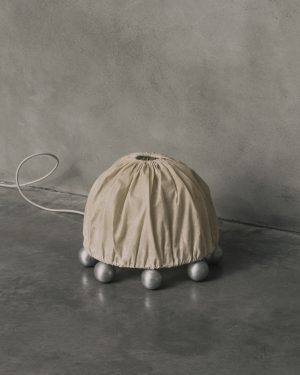 Alter Table Lamp – Aluminium Beeswax Linen
Alter Table Lamp – Aluminium Beeswax Linen -

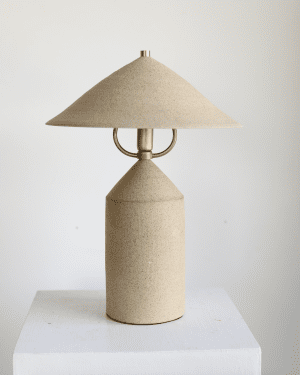 Revel – Speckled Clay Table Lamp
Revel – Speckled Clay Table Lamp -

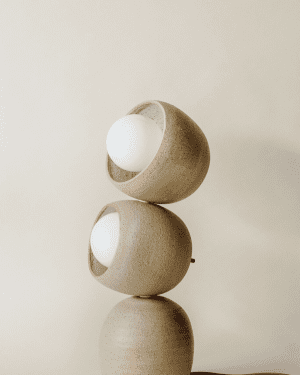 The Stacker – Clay Table Lamp
The Stacker – Clay Table Lamp -

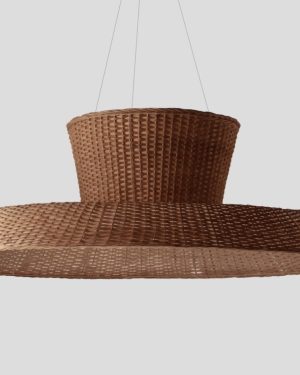 Strikha – Willow Vine Pendant Lamp
Strikha – Willow Vine Pendant Lamp -

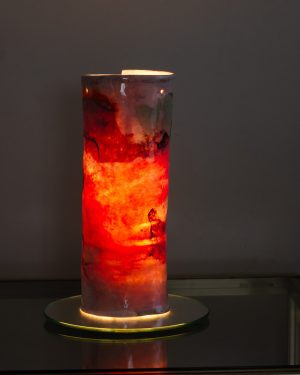 Porcelain Table Lamp – Iridescent Orange/red
Porcelain Table Lamp – Iridescent Orange/red -

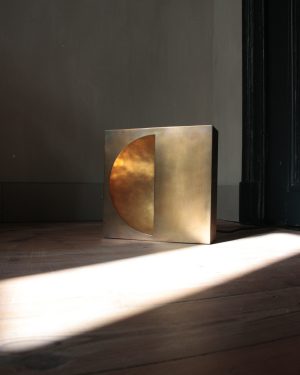 Wl04 – Brass / Aluminum Wall Lamp
Wl04 – Brass / Aluminum Wall Lamp -

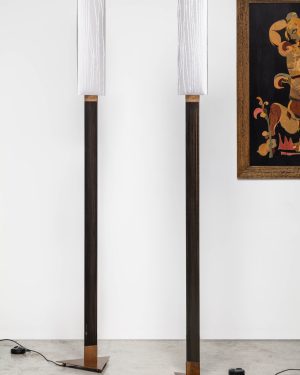 Aldebaran Floor Lamp – Macassar Wood Column
Aldebaran Floor Lamp – Macassar Wood Column -

 Lucent Pendant – Vertical Red/Orange Light
Lucent Pendant – Vertical Red/Orange Light -

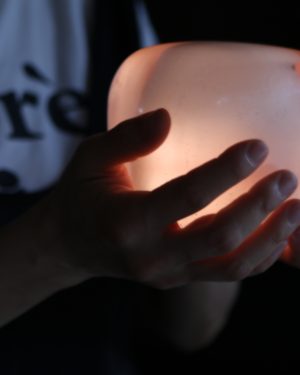 Lullaby And Handy Ring – Wireless Resin Lighting
Lullaby And Handy Ring – Wireless Resin Lighting -

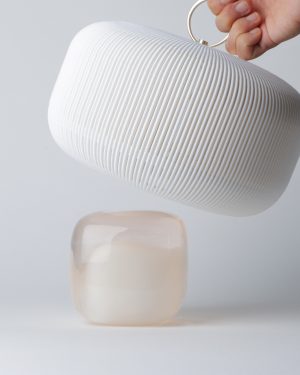 Lullaby And Promenade Low – Wireless Resin Lighting
Lullaby And Promenade Low – Wireless Resin Lighting -

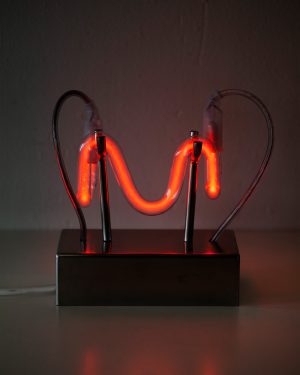 Jag Ville Blive – Neon Table Lamp
Jag Ville Blive – Neon Table Lamp












